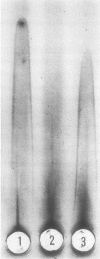Abstract
By utilizing a simple modification of previous immunological assays, we have demonstrated that most, if not all, hemophilic plasmas contain antigen reactive with human antibodies directed against Factor VIII procoagulant activity (VIIIc). Antibodies developing in a nonhemophiliac patient and in a hemophiliac patient gave similar results. The VIIIc antigen so identified was removed from hemophilic plasmas with immobilized rabbit antibody which reacted with normal VIIIc and von Willebrand's disease antigen. These data suggest that there are greater antigenic similarities between normal and hemophilic Factor VIII than previously thought.
Full text
PDF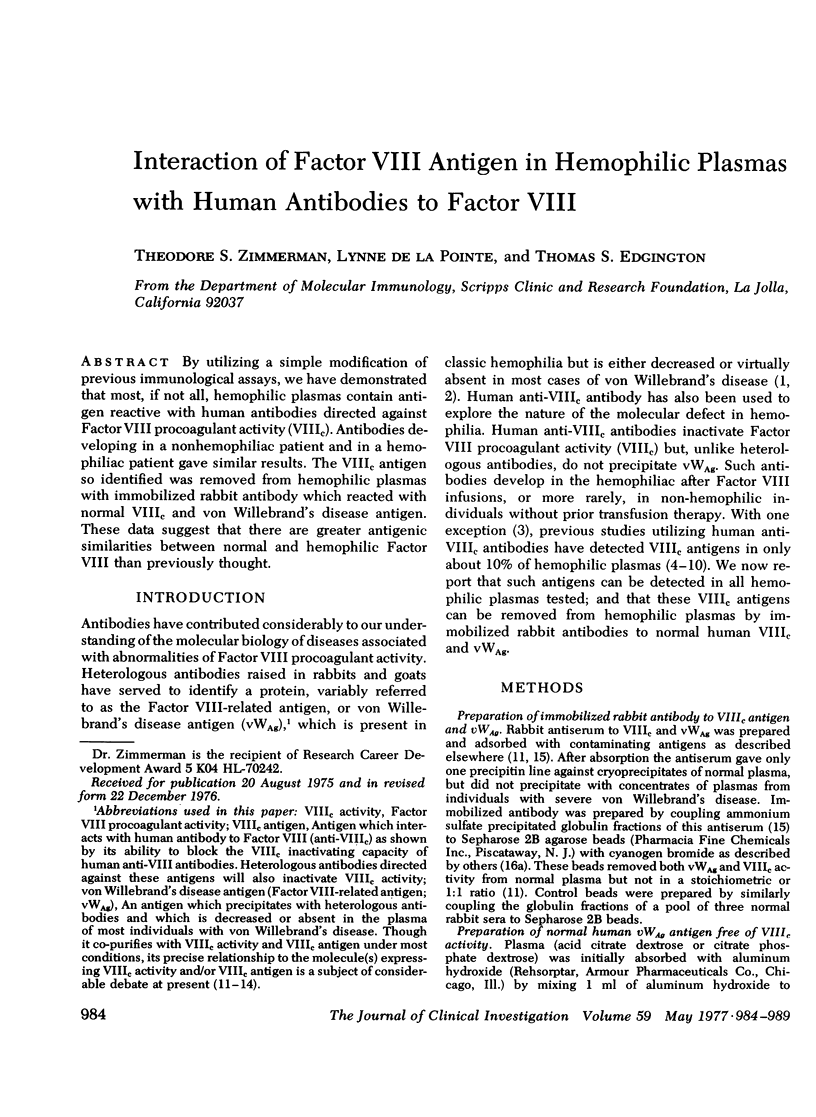
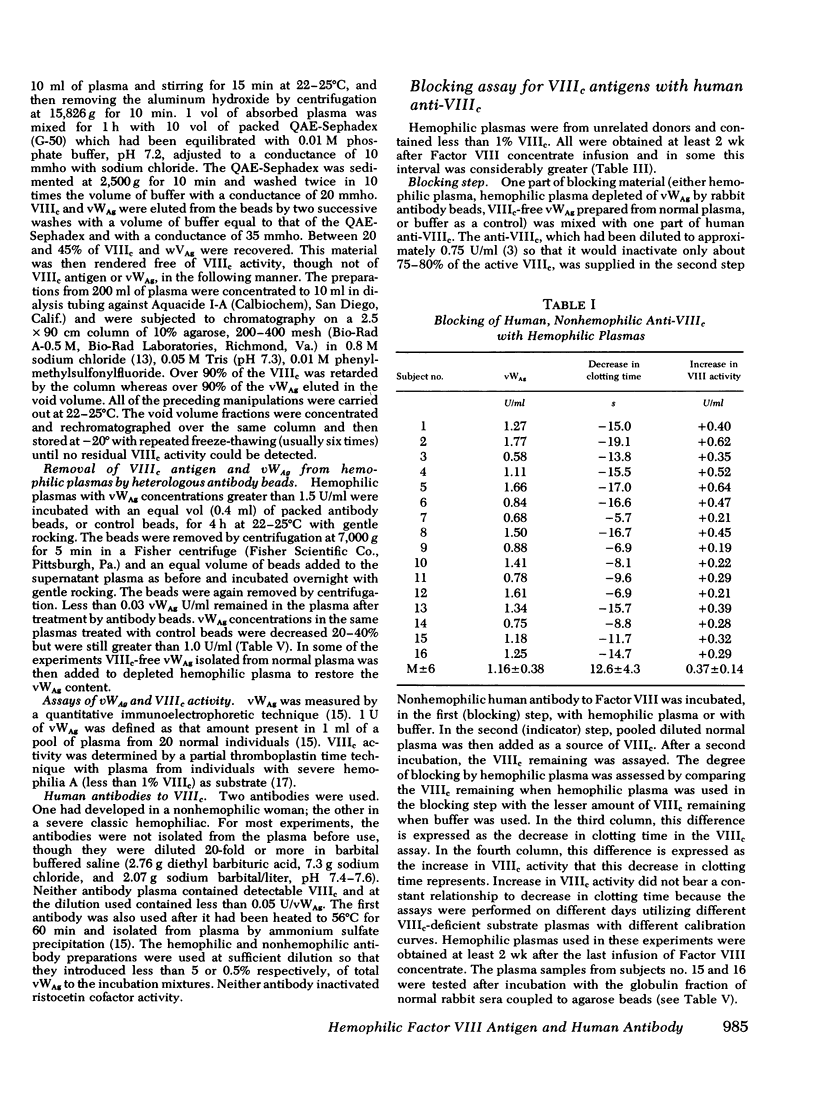
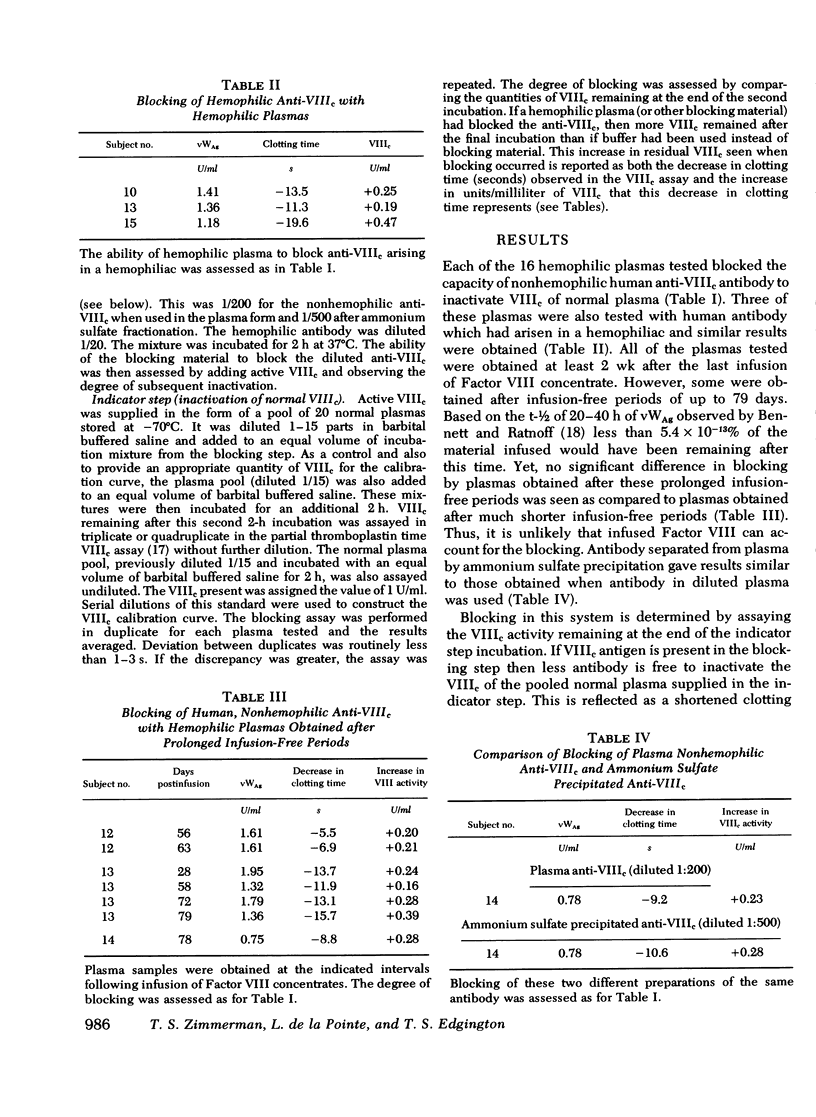
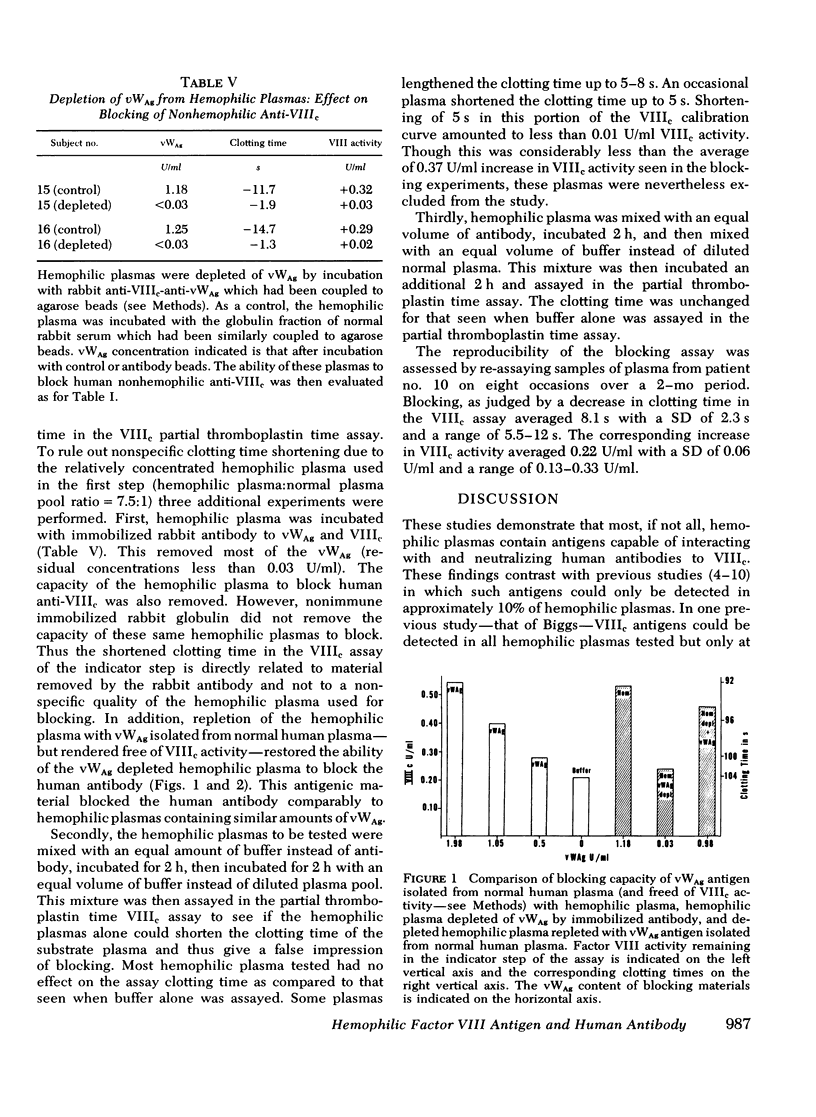
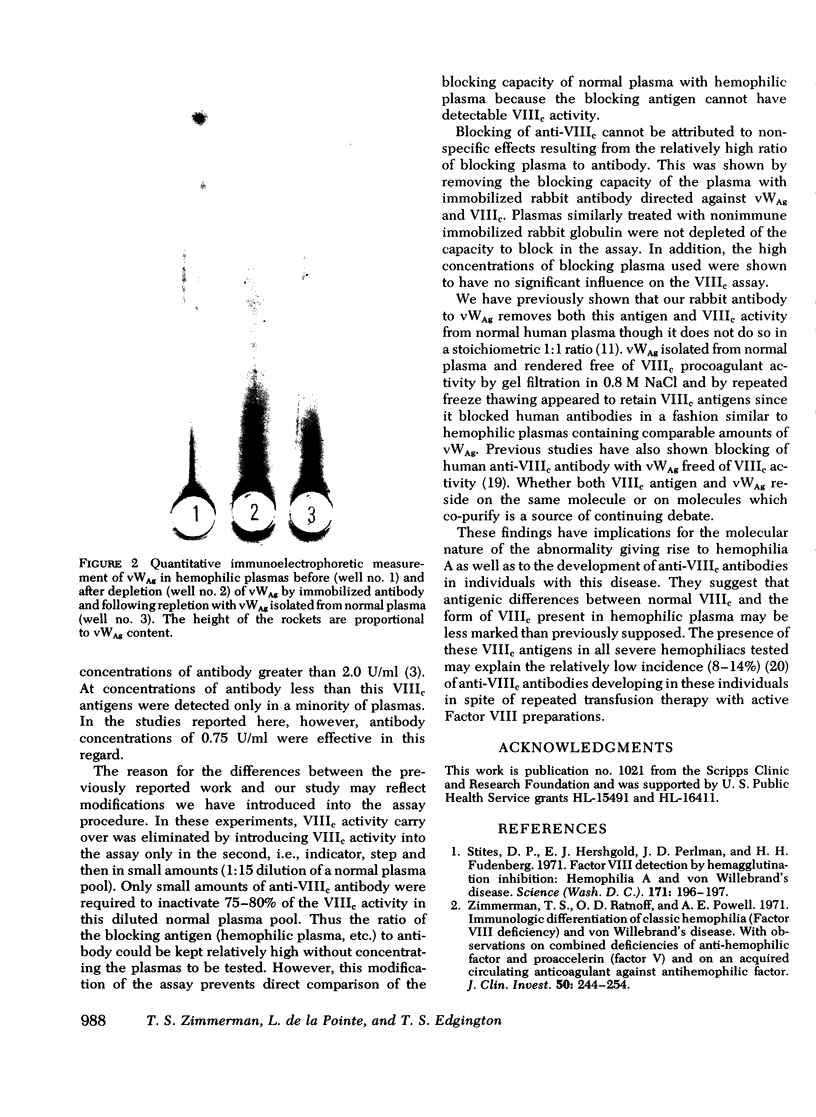
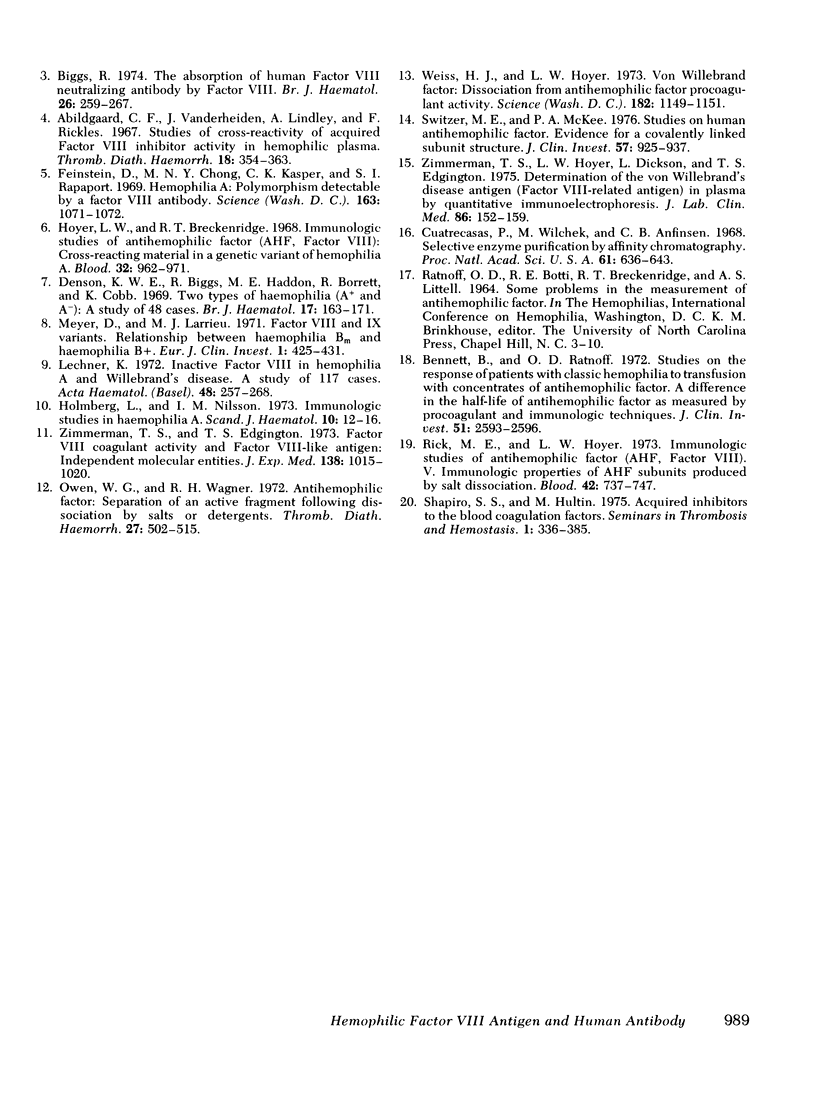
Images in this article
Selected References
These references are in PubMed. This may not be the complete list of references from this article.
- Abildgaard C. F., Vanderheiden J., Lindley A., Rickles F. Studies of cross-reactivity of acquired factor VIII inhibitor activity in hemophilic plasma. Thromb Diath Haemorrh. 1967 Dec 31;18(3-4):354–363. [PubMed] [Google Scholar]
- Bennett B., Ratnoff O. D. Studies on the response of patients with classic hemophilia to transfusion with concentrates of antihemophilic factor. A difference in the half-life of antihemophilic factor as measured by procoagulant and immunologic techniques. J Clin Invest. 1972 Oct;51(10):2593–2596. doi: 10.1172/JCI107076. [DOI] [PMC free article] [PubMed] [Google Scholar]
- Biggs R. The absorption of human factor VIII neutralizing antibody by factor VIII. Br J Haematol. 1974 Feb;26(2):259–267. doi: 10.1111/j.1365-2141.1974.tb00471.x. [DOI] [PubMed] [Google Scholar]
- Cuatrecasas P., Wilchek M., Anfinsen C. B. Selective enzyme purification by affinity chromatography. Proc Natl Acad Sci U S A. 1968 Oct;61(2):636–643. doi: 10.1073/pnas.61.2.636. [DOI] [PMC free article] [PubMed] [Google Scholar]
- Denson K. W., Biggs R., Haddon M. E., Borrett R., Cobb K. Two types of haemophilia (A+ and A-): a study of 48 cases. Br J Haematol. 1969 Aug;17(2):163–171. doi: 10.1111/j.1365-2141.1969.tb01355.x. [DOI] [PubMed] [Google Scholar]
- Feinstein D., Chong M. N., Kasper C. K., Rapaport S. I. Hemophilia A: polymorphism detectable by a factor 8 antibody. Science. 1969 Mar 7;163(3871):1071–1072. doi: 10.1126/science.163.3871.1071. [DOI] [PubMed] [Google Scholar]
- Holmberg L., Nilsson I. M. Immunologic studies in haemophilia A. Scand J Haematol. 1973;10(1):12–16. doi: 10.1111/j.1600-0609.1973.tb00032.x. [DOI] [PubMed] [Google Scholar]
- Hoyer L. W., Breckenridge R. T. Immunologic studies of antihemophilic factor (AHF, factor VIII): cross-reacting material in a genetic variant of hemophilia A. Blood. 1968 Dec;32(6):962–971. [PubMed] [Google Scholar]
- Lechner K. Inactive factor VIII in hemophilia A and Willebrand's disease. A study of 117 cases. Acta Haematol. 1972;48(5):257–268. doi: 10.1159/000208468. [DOI] [PubMed] [Google Scholar]
- Meyer D., Larrieu M. J., Obert B. Factor VIII and IX variants. Relationship between haemophilia B M and haemophilia B+. Eur J Clin Invest. 1971 Sep;1(6):425–431. doi: 10.1111/j.1365-2362.1971.tb00553.x. [DOI] [PubMed] [Google Scholar]
- Owen W. G., Wagner R. H. Antihemophilic factor: separation of an active fragment following dissociation by salts or detergents. Thromb Diath Haemorrh. 1972 Jul 31;27(3):502–515. [PubMed] [Google Scholar]
- Rick M. E., Hoyer L. W. Immunologic studies of antihemophilic factor (AHF, factor VIII). V. Immunologic properties of AHF subunits produced by salt dissociation. Blood. 1973 Nov;42(5):737–747. [PubMed] [Google Scholar]
- Stites D. P., Hershgold E. J., Perlman J. D., Fudenberg H. H. Factor 8 detection by hemagglutination inhibition: hemophilia A and von Willebrand's disease. Science. 1971 Jan 15;171(3967):196–197. doi: 10.1126/science.171.3967.196. [DOI] [PubMed] [Google Scholar]
- Switzer M. E., McKee P. A. Studies on human antihemophilic factor. Evidence for a covalently linked subunit structure. J Clin Invest. 1976 Apr;57(4):925–937. doi: 10.1172/JCI108369. [DOI] [PMC free article] [PubMed] [Google Scholar]
- Weiss H. J., Hoyer I. W. Von Willebrand factor: dissociation from antihemophilic factor procoagulant activity. Science. 1973 Dec 14;182(4117):1149–1151. doi: 10.1126/science.182.4117.1149. [DOI] [PubMed] [Google Scholar]
- Zimmerman T. S., Edgington T. S. Factor VIII coagulant activity and factor VIII-like antigen: independent molecular entities. J Exp Med. 1973 Oct 1;138(4):1015–1020. doi: 10.1084/jem.138.4.1015. [DOI] [PMC free article] [PubMed] [Google Scholar]
- Zimmerman T. S., Hoyer L. W., Dickson L., Edgington T. S. Determination of the von Willebrand's disease antigen (factor VIII-related antigen) in plasma by quantitative immunoelectrophoresis. J Lab Clin Med. 1975 Jul;86(1):152–159. [PubMed] [Google Scholar]
- Zimmerman T. S., Ratnoff O. D., Powell A. E. Immunologic differentiation of classic hemophilia (factor 8 deficiency) and von Willebrand's dissase, with observations on combined deficiencies of antihemophilic factor and proaccelerin (factor V) and on an acquired circulating anticoagulant against antihemophilic factor. J Clin Invest. 1971 Jan;50(1):244–254. doi: 10.1172/JCI106480. [DOI] [PMC free article] [PubMed] [Google Scholar]



